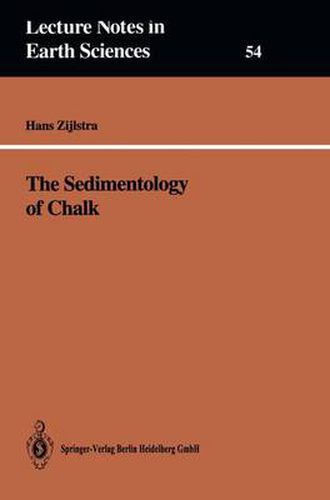Readings Newsletter
Become a Readings Member to make your shopping experience even easier.
Sign in or sign up for free!
You’re not far away from qualifying for FREE standard shipping within Australia
You’ve qualified for FREE standard shipping within Australia
The cart is loading…






This title is printed to order. This book may have been self-published. If so, we cannot guarantee the quality of the content. In the main most books will have gone through the editing process however some may not. We therefore suggest that you be aware of this before ordering this book. If in doubt check either the author or publisher’s details as we are unable to accept any returns unless they are faulty. Please contact us if you have any questions.
The Sedimentology of Chalk describes processes that caused the rhythmic, vertical variation in grain size, structures and authigenic mineral concentrations. Special attention is given to Late Cretaceous and Early Tertiary, subtropical, shallow marine, fine-grained, detrital bioclastic carbonates of northwest Europe. Numerical models are presented that enable the simulation of the genesis of flint nodule layers, hard grounds and complex wavy bedded sequences, such as the K/T boundary sequence of Stevns Klint (Denmark). The book is of interest to sedimentary geologists working on depositional and diagenetic features in carbonates.
$9.00 standard shipping within Australia
FREE standard shipping within Australia for orders over $100.00
Express & International shipping calculated at checkout
This title is printed to order. This book may have been self-published. If so, we cannot guarantee the quality of the content. In the main most books will have gone through the editing process however some may not. We therefore suggest that you be aware of this before ordering this book. If in doubt check either the author or publisher’s details as we are unable to accept any returns unless they are faulty. Please contact us if you have any questions.
The Sedimentology of Chalk describes processes that caused the rhythmic, vertical variation in grain size, structures and authigenic mineral concentrations. Special attention is given to Late Cretaceous and Early Tertiary, subtropical, shallow marine, fine-grained, detrital bioclastic carbonates of northwest Europe. Numerical models are presented that enable the simulation of the genesis of flint nodule layers, hard grounds and complex wavy bedded sequences, such as the K/T boundary sequence of Stevns Klint (Denmark). The book is of interest to sedimentary geologists working on depositional and diagenetic features in carbonates.